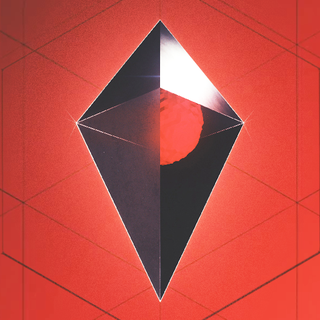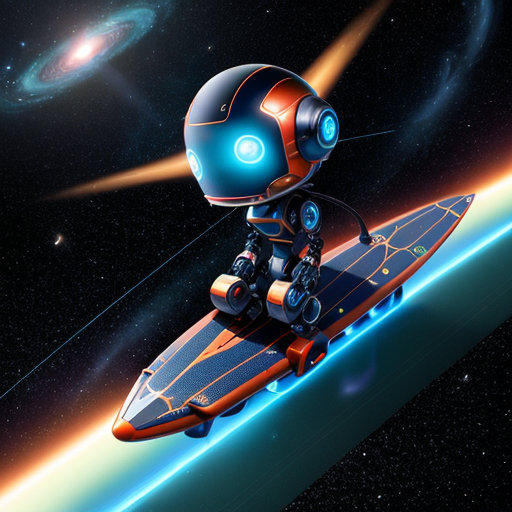Does this change later in the game? I’m looking for steep elevation changes, changes in light/sunlight, temperature, or oceans. A planet with ice caps would be cool. It feels like every planet has the same gravity and day/night cycle, etc.
I’ve had planets with insane mountain ranges that made everest seem like an anthill, vast water planets with very little land, ice ball planets, and totally robot based eco systems.
I take it you’ve just started lol.
any screenshots?
Not on this phone right now. I’ll take one later of my robo-horse and post it for you to see. I think that’s on my steamdeck save.
You’ll see some crazy shit, trust me.
Edit:
I might have misunderstood the question, but here is my robo-horse anyway lol

i love it
I think what OP means is that no matter the planet, the biome is the same across the planet. An ice planet is cold everywhere, desert planets are hot everywhere during the day, etc.
So yes all planets have one noon, a cold planet will be cold everytwhere, a desert planet will be desert everywhere
There are kind of sub biomes when it comes to terrain. For the most part planets will be a hilly type of terrain, but sometimes there will be spots where there are plateaus or cubes or donuts of terrain. The most extreme example I’ve had is the standard hills biome then I fly to a different spot of the planet with my pulse engine and it’s these extreme hills
Edit: forgot to add dead planets are the only one with a gravity difference
Planets have at most four “biomes,” but how much you think the differences between these actually counts is really up for debate. They have:
- Their main land mass
- A “barren” variant which appears in blotches has different rocks and little/no plant life and spawns fewer animals
- An underwater biome, if that planet has water
- The underground/cave biome
That’s it.
Furthermore, the cave biomes of all plates are virtually identical to each other with the visually interchangeable stalactites and stalagmites, the same types of bulb plants, identical hazardous flora, and hexagonal rock pillars. This is so even where it makes absolutely no sense, i.e. on the various specialty “anomalous” planets which have implied artificial or non-organic surfaces or even sterile ones, the caves are all the same. Including presumably organic mushrooms and bulb plants. The climate, color, plant content, surface terrain etc. of a planet has no bearing on what its caves look like other than their size and frequency.
To answer your question, all you need is the above. The rest of my observations got rather long. Here they are:
Planets can have different terrain generation algorithms that will broadly determine the shape and height of their mountains, and one optional geographic feature (like mesas, or big land spikes randomly but fairly uniformly distributed around the surface) but these will not change appreciably with your location on a given planet except possibly the prevalence of land vs. ocean basins. You can read more about this here.
Biome type, terrain archetype, and the planet’s terrain feature vary only from planet to planet, and apply to each planet as a whole. They do not vary within the same planet. I’m using “biome” here in how the game defines it, i.e. as that planet’s particular theme: Ice planets are ice all over their whole surface. Toxic planets are toxic all over their entire surface. Desert planets are the same desert all over their entire surface. Etc.
There is no difference in climate at different latitudes. Waterbound planets may have differing proportions of water to land masses in different locations, which is visible from space. Creatures (especially aquatic ones) can sometimes be flagged to be found “mainly in the North” or “mainly in the South,” but otherwise the distribution of plants, rocks, and animals is statistically uniform all over the planet’s surface regardless of location. The only differentiator is whether they spawn on the ground, in the water, in the air, or in caves – and that they spawn a lot less on the barren patches.
You will notice in fact that your location pin on your Discoveries tab doesn’t even bother to track your longitude, just your latitude. I.e. planets don’t even truly have an “east” or “west” in any way that impacts gameplay whatsoever. This also means you will never see a create flagged “found mainly in the East/West,” because as far as the game is concerned there is actually no such thing.
Yes, all planets have the same gravitational constant except airless worlds, which have moonlike gravity. This is regardless of their diameter or implied mass. (Airless worlds also lack flora and fauna except cave flora and hazardous plants. Because that makes sense.)
Yes, all planets always have the same day/night cycle and are always implied to be perfectly vertically aligned relative to their orbits. The length of day and night is always the same for all planets, regardless of size or their implied rotational speed. They are furthermore never tidally locked to anything (nor are their moons) nor have a titled rotational axis, and will still exhibit their day/night cycle even if they are e.g. completely obscured from their host star(s) by their parent planet (in the case of moons) or a gas giant planet, and in that sense will behave as if you are standing on their equator regardless of your latitude. You can race the dusk line around a planet in your ship and indeed even outrun it, and take off at night landing in the day or vise versa, but this is an illusion. As soon as you make landfall you’re bound to the same day cycle clock regardless of what the planet looks like from space.
In this way NMS is very rudimentary. It’s easy to complain about superficially but even as unrealistic as it is there’s really no gameplay detriment. And making its orbital and planetary mechanics truly or even partially realistic would actually be quite annoying and force you to think about things a lot more than you currently do in some specific edge cases, which would be silly for not much benefit. Would it be cool if all planets of the same type weren’t a single climate stereotype? Sure. When you’re going to visit multiple tens of different planets in a single play session, does that actually matter? Probably not.
For another example, there is also universal gravity in deep space. Taken from your player’s viewpoint, the bottom of your screen is “down” when you’re standing upright on a surface, regardless of logic. Don’t believe me? Warp your freighter to open space far away from any planet, stand on the exterior deck of any of your frigates, and then jump off.
I’m pretty sure the way that planet surfaces are stored in the game engine is toroidal rather than spherical, i.e. there is no true North or South pole on any given planet’s surface, and the surface is actually a rectangle with the edges wrapped around, that’s got the illusion of being mapped to a sphere applied to it. But I can’t prove this offhand. Other than, if you walk to the spot that should North pole on any planet your compass should act like one does on Earth, i.e. all directions are South. But that’s not how it works in game. You can line the compass in your HUD up to North and walk all the way around the planet if you have enough time on your hands until you wind up back where you started, but your compass will remain showing “North” the entire time. On a sphere, this would be impossible.
Your location on a planet can be expressed in a two dimensional X and Y coordinate which is even visible, e.g. on the screens in your ship, but you can observe that while flying around an ostensibly spherical planet the lines of both latitude and longitude appear to be perfectly straight and neither of them are curved or convergent at any point which is also impossible on a spherical surface.
Etc.
Most everyone else has already directly answered your question.
I’m hoping that some of the work from Light No Fire will be brought back into No Man’s Sky. Specifically so that we end up seeing planets with much more diverse biomes.






